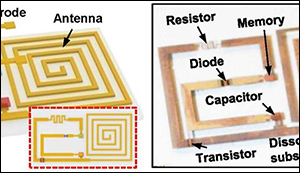Electronic devices that can degrade and physically disappear on demand
4. 9. 2017 | TechXplore | www.techxplore.com
A team of researchers from the U.S. and China has demonstrated electronic devices that can degrade and disappear on demand using nothing but moisture in the air. In their paper published on the open access site Science Advances, the team describes their devices and offers ideas on applications that could benefit from them.
Most people know that electronic devices do not work particularly well in humid conditions—if your house is humid all the time, your desktop computer will not last very long, for example. This is because parts of the electronics fall prey to oxidation. In this new effort, the researchers took this knowledge to the extreme by building electronic devices from materials that degrade much faster than normal under humid conditions—so fast that the devices can actually disappear. They rely on a slightly different process—hydrolysis, which works due to the activation of corrosive acids in the materials used.

Researchers have previously made other such devices, known collectively as transient electronics, but they only operated in aqueous solutions and were degraded by water molecules. To achieve roughly the same effect, the researchers searched for and found a material that is already known to degrade in humid environments—the polymer polyanhydride. The team integrated the polymer with electronic components by applying it in thin films.
¨Read more at TechXplore
Image Credit: Gao et al., Sci. Adv. 2017
-jk-




